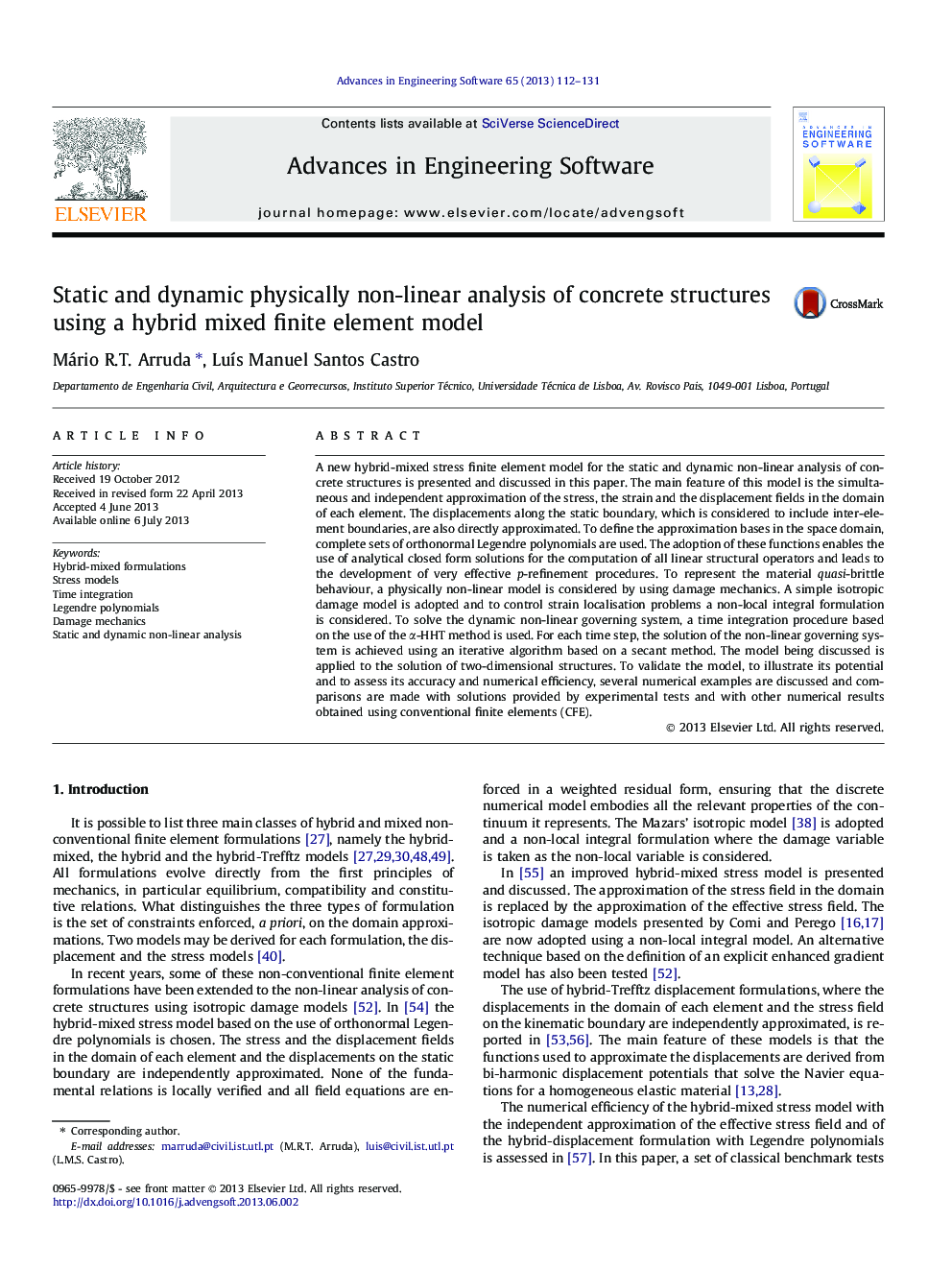| کد مقاله | کد نشریه | سال انتشار | مقاله انگلیسی | نسخه تمام متن |
|---|---|---|---|---|
| 568031 | 1452152 | 2013 | 20 صفحه PDF | دانلود رایگان |

• A new hybrid-mixed stress finite element model is presented.
• Independent approximation of stress, strain and displacement fields.
• Static and dynamic physically non-linear analysis with isotropic damage models.
• Use of effective p-refinement procedures.
• Legendre polynomials are used to define the approximation bases.
A new hybrid-mixed stress finite element model for the static and dynamic non-linear analysis of concrete structures is presented and discussed in this paper. The main feature of this model is the simultaneous and independent approximation of the stress, the strain and the displacement fields in the domain of each element. The displacements along the static boundary, which is considered to include inter-element boundaries, are also directly approximated. To define the approximation bases in the space domain, complete sets of orthonormal Legendre polynomials are used. The adoption of these functions enables the use of analytical closed form solutions for the computation of all linear structural operators and leads to the development of very effective p-refinement procedures. To represent the material quasi-brittle behaviour, a physically non-linear model is considered by using damage mechanics. A simple isotropic damage model is adopted and to control strain localisation problems a non-local integral formulation is considered. To solve the dynamic non-linear governing system, a time integration procedure based on the use of the α-HHT method is used. For each time step, the solution of the non-linear governing system is achieved using an iterative algorithm based on a secant method. The model being discussed is applied to the solution of two-dimensional structures. To validate the model, to illustrate its potential and to assess its accuracy and numerical efficiency, several numerical examples are discussed and comparisons are made with solutions provided by experimental tests and with other numerical results obtained using conventional finite elements (CFE).
Journal: Advances in Engineering Software - Volume 65, November 2013, Pages 112–131